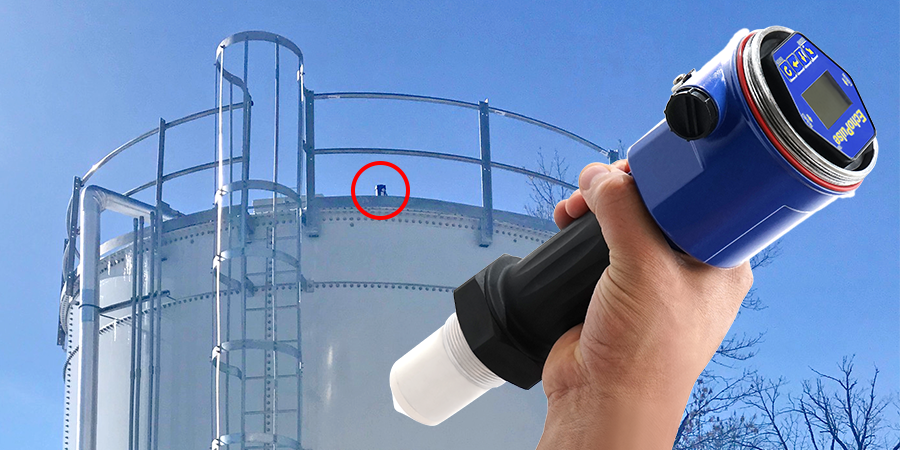Water and diesel tank management are critical aspects of various industries, necessitating accurate and reliable level measurement devices. Among these, the ultrasonic level sensor stands out as a non-contact solution, offering unparalleled efficiency. In this comprehensive guide, we will delve into the world of ultrasonic water tank level sensor, exploring their working principles, applications, and the featured sensor’s benefits.
Ultrasonic level sensors have become indispensable in industries where precise level measurements are crucial. These sensors operate on the principle of non-contact measurement, ensuring accuracy without physical contact with the substance being monitored. In the realm of water and diesel tank management, the need for reliable level sensors has led to the development of advanced technologies like ultrasonic sensors.
Understanding Ultrasonic Level Sensors
Ultrasonic sensors function by emitting high-frequency sound waves and measuring the time it takes for the waves to bounce back after hitting a surface. This non-contact approach provides several advantages, including the ability to measure levels in challenging environments and substances with varying properties. The technology’s versatility makes it suitable for a wide range of applications, from industrial processes to environmental monitoring.
In the context of diesel tank level sensing, ultrasonic sensors play a pivotal role. Diesel tanks pose unique challenges, such as the viscosity of diesel fuel and potential contaminants. Ultrasonic level sensors address these challenges effectively, providing accurate readings even in demanding conditions. The benefits extend to improved fuel management, preventing unexpected downtime and optimizing operational efficiency.
Water Tank Level Sensor: A Necessity for Efficient Water Management
Efficient water management is crucial for various industries, including agriculture, manufacturing, and municipal services. The ultrasonic water tank level sensor emerges as a necessity, offering real-time monitoring and aiding in the prevention of issues such as overflows or shortages. These sensors contribute to sustainability by ensuring responsible water usage and minimizing wastage.
The highlighted ultrasonic water tank level sensor boasts features that make it well-suited for diverse applications. With a focus on precision and reliability, this sensor provides accurate readings regardless of the water tank’s size or environmental conditions. Its non-contact nature also eliminates the risk of contamination, ensuring the integrity of water quality.
Free Calibration: Simplifying Sensor Setup
Calibrating sensors is a crucial step in ensuring accurate readings. The ultrasonic water tank level sensor featured in this guide offers the added advantage of free calibration. This simplifies the setup process for users, making it more accessible even for those with limited technical expertise. Free calibration not only enhances user experience but also contributes to the sensor’s long-term reliability.
Calibrating the ultrasonic water tank level sensor involves a straightforward process. Users can follow a step-by-step guide provided by the manufacturer to ensure optimal performance. This feature not only saves time but also reduces the need for specialized personnel, making the sensor a cost-effective solution for businesses of all sizes.
Installation and Setup Guide
Proper installation is crucial for the optimal functioning of any sensor. The installation process for the ultrasonic water tank level sensor involves careful considerations, including the tank’s size, material, and the environmental conditions it is exposed to. Pre-installation assessments help users determine the best placement and configuration for the sensor.
A step-by-step installation guide is provided with the sensor, offering detailed instructions for users. From mounting the sensor to connecting it to the monitoring system, the guide ensures a smooth and hassle-free setup. Troubleshooting tips are also included, addressing common installation issues and ensuring that users can maximize the sensor’s performance.
Real-world Applications
The effectiveness of the ultrasonic water tank level sensor is best illustrated through real-world applications. Case studies highlight its successful implementation in various industries, showcasing its adaptability and reliability. Testimonials from businesses and organizations using the sensor provide valuable insights into its performance and impact on operational efficiency.
Industries such as agriculture, where water is a precious resource, benefit from the sensor’s ability to prevent water wastage and optimize irrigation systems. Municipalities use the sensor to monitor water reservoirs, ensuring a stable and reliable water supply to residents. The sensor’s versatility extends to industrial processes, where precise control of water levels is essential for maintaining operational efficiency.
Comparing Ultrasonic Water Tank Level Sensors
Comparing the ultrasonic water tank level sensor with traditional methods reveals the advantages of adopting advanced technology. Unlike float switches or capacitance sensors, ultrasonic sensors offer non-contact measurement, eliminating the risk of mechanical failure or contamination. The sensor’s ability to operate in various environments, including corrosive or hazardous ones, sets it apart from competing technologies.
Moreover, the ultrasonic water tank level sensor excels in terms of cost-effectiveness. The initial investment is justified by its long-term reliability, minimal maintenance requirements, and the free calibration feature. When compared to other sensor technologies, the ultrasonic option emerges as a superior choice for businesses seeking efficiency without compromising accuracy.
Future Trends in Ultrasonic Level Sensing Technology
As technology continues to advance, so does the potential for further improvements in ultrasonic level sensing technology. Emerging trends include the integration of artificial intelligence for predictive maintenance, enhanced connectivity through the Internet of Things (IoT), and the development of sensors with increased sensitivity and precision.
The highlighted ultrasonic water tank level sensor aligns with these future trends, incorporating features that make it compatible with evolving technologies. Its adaptability positions it as a future-proof solution, ensuring that businesses can seamlessly integrate advancements in level sensing technology as they emerge.
Conclusion
In conclusion, the ultrasonic water tank level sensor presented in this guide offers a comprehensive solution for industries seeking efficient and reliable level measurement. Its non-contact nature, coupled with features like free calibration, simplifies the monitoring process and contributes to optimal water and diesel tank management.
By adopting this advanced sensor technology, businesses can maximize efficiency, prevent operational disruptions, and contribute to sustainability through responsible resource management. The future-ready design of the ultrasonic water tank level sensor ensures that it remains a valuable asset as technology continues to evolve, making it a wise investment for industries of all kinds.

